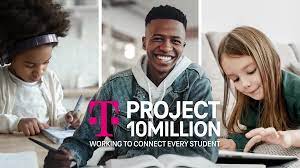In today’s fast-paced world, it is essential for students to stay informed about current events and connect with global perspectives. This is why winning digital access to the Wall Street Journal (WSJ) for your entire school can be a game-changer in shaping young minds. With this prestigious publication at their fingertips, students and faculty alike can enhance their understanding of various disciplines and develop crucial critical thinking skills.
Expanding Knowledge across Disciplines
The Wall Street Journal offers far more than just financial news. For students of all areas of study, it delivers comprehensive coverage ranging from politics, technology, and science to arts, culture, and lifestyle. By offering myriad topics for exploration, WSJ allows every student to broaden their knowledge base.
A Source of Real-World Material for Classrooms
Integrating WSJ articles into your school’s curriculum provides applicable real-world examples that enrich classroom discussion, promoting the development of critical analysis skills. Subjects such as economics, history, or business studies come alive with relevant content that directly portrays events shaping our world.
Boosting College and Career Readiness
In an increasingly competitive job market, having access to the Wall Street Journal equips our future leaders with valuable insights and perspectives on business and finance. Additionally, these resources will distinguish them from their peers when applying to college or commencing their careers.
Strengthening Faculty Development & Engagement
Educators stand to gain from the vast resources available through this digital access as well. The WSJ can be a vital part of a teacher’s toolkit as they stay current with field-specific knowledge and integrate it into lesson plans and activities. This ongoing learning journey inspires professional growth that ultimately benefits the entire educational ecosystem.
Planning for Success: How Your School Can Win
Winning digital access to the Wall Street Journal for your institution can be as simple as participating in competitions organized by WSJ or its partner organizations, securing grant funding or sponsorships from local businesses or philanthropists, and showcasing the benefits of this resource to the decision-makers in your school district.
– Step 1: Research opportunities: Explore WSJ’s website for programs tailored to educational institutions, competitions, and subscriptions specially designed for schools.
– Step 2: Leverage local support: Connect with your local business community or mentors who recognize the significance of the Wall Street Journal as an education asset. Engage them in sponsoring subscriptions or partnering in fundraising initiatives.
– Step 3: Advocacy: Demonstrate the advantages of incorporating WSJ’s resources into your school community. Enlist faculty support and create a proposal outlining how access to WSJ will enhance the school’s academic offerings.
Winning digital access to the Wall Street Journal for your entire school has wide-ranging benefits that extend across disciplines. By incorporating this prestigious resource into your educational landscape, you will empower students and educators alike to develop a finely-tuned global perspective and critical thinking skills essential in today’s world.




